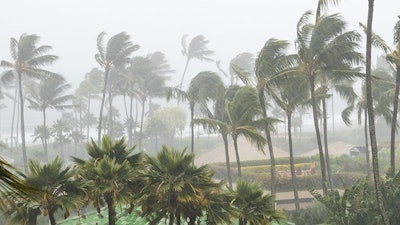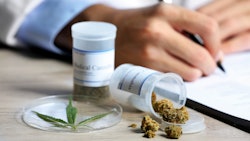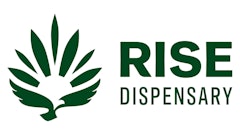
In the weeks after two major hurricanes stormed the southeastern corner of the U.S. and its territories, cannabis companies are starting to resume operations.
Many of Florida’s medical cannabis operations have reopened to serve patients as search-and-rescue teams continue to examine homes and businesses along the Gulf Coast following Hurricane Ian’s wrath.
The Category 4 hurricane brought maximum-sustained winds of 150 miles per hour, and roughly 3.3 million Florida homes and businesses initially lost power during the storm, according to an Oct. 3 Reuters report.
Hurricane Ian has resulted in at least 125 deaths in the U.S., CNN reported Oct. 5.
ACS Laboratory, a cannabis, CBD and hemp testing facility based in Sun City Center, Fla. (about 30 minutes south of Tampa), closed on Sept. 28 due to the storm and did not reopen until Sept. 30. The business sent every employee home and lost power six times during a 24-hour period, said ACS Laboratory Founder and President Roger Brown.
“Fortunately for us, we are in a full concrete building and didn't sustain any damage, but there was significant flooding all around the Tampa area, which was really, really bad,” Brown said. “And almost all of our clients closed, except for the ones in South Florida. And then many of them closed a significant number of their dispensaries.”
Victoria Walker, vice president of regional marketing for multistate cannabis operator Columbia Care, said the company’s employees and their families were safe from the storm. In addition, Columbia Care kept eight of its 14 dispensaries open across Florida, including the locations in Melbourne, Stuart, Jacksonville, Bradenton, Delray Beach, Miami, Gainesville and Brandon.
The team worked through the weekend after the storm to get additional stores open as power was restored and access to roads improved.
“With the storm behind us, we are also already working on organizing support for our communities as the state embarks on the path to recovery,” Walker said.
For multistate operator Cresco Labs, it was important to keep the company’s Sunnyside dispensaries open in Florida as long as possible without putting employees or patients at risk, said Cresco Labs Florida Regional President Cris Rivera.
“We prepared our stores and throttled our closings as we saw predictions of where the storm was supposed to hit, and when,” Rivera said.
As Hurricane Ian ravaged the Gulf Coast, two of Cresco’s dispensary locations experienced “massive damage,” according to Rivera, and five stores remain closed.
“All of our team members are safe, but many of their homes were severely impacted. Cresco is working with them for short-term housing, alternative payroll delivery and emergency pay to support our team members through this difficult time,” he said.
Sevi Borrelli, vice president of Florida Retail for multistate operator Ayr Wellness, said 48 of the company’s 51 Florida dispensaries are open.
“Our hearts go out to those who have been impacted by Hurricane Ian,” he said. “At this time, we are grateful to report that all 700 of our Florida-based employees are accounted for, and as Floridian communities rebuild over the coming days and weeks, their safety will remain a top priority.”
Borrelli added that Ayr’s cultivation facility in Gainesville, Fla., sustained no damage during the storm and continues to operate normally.
"Patients could access real-time hurricane and dispensary updates with the latest available information, including store openings, closings and re-openings."
- John Tipton, President, Verano
All of the vertically integrated operations held by multistate operator Verano in Florida are back online, with the exception of three of its MÜV dispensaries that remain closed due damage sustained during the storm and its lingering impacts, said Verano President John Tipton. All of the company’s employees are safe and accounted for, he added.
“Upon Hurricane Ian's landfall, we worked quickly to prioritize the health and safety of our team members across Florida, while also maintaining patients’ access to medicine wherever safely possible,” Tipton said. “Throughout Ian’s impact, we maintained a Hurricane Ian MÜV blog post, where patients could access real-time hurricane and dispensary updates with the latest available information, including store openings, closings and re-openings.
“We are proud of our team for their exceptional efforts in the face of this challenging situation, and the company is providing support to employees who incurred damage to their homes or property as a result of the storm,” Tipton added. “Additionally, we will also make a donation to a Florida relief fund to support community recovery efforts across the state in the wake of this devastating storm.”
Hurricane Fiona Hits Puerto Rico
Meanwhile, residents of Puerto Rico continue to recover following Hurricane Fiona, a Category 1 storm that made landfall Sept. 18 with 85-mile-per-hour winds, according to PBS.
Hurricane Fiona left 3.2 million customers in Puerto Rico without power, PBS reports, some of whom still have not had power restored. The Puerto Rican government has so far linked 16 deaths with the storm—a count that may continue to rise, as more cases are under investigation.
The heavy rains brought by Fiona caused major flooding on the west side of the island especially, exacerbating ongoing infrastructure issues.
Francheska Nieves, an independent consultant who works with cannabis facilities in Puerto Rico, says nearly every cultivation site on the island is indoor. But with an unreliable electrical grid—even when the weather is mild—most facilities run on diesel-powered generators.
So, even for those who aren’t dealing with issues related to the electrical grid, power issues still abound when it comes to cost. Sourcing diesel fuel has become difficult since Fiona as fallen branches and other debris block roads, and essential operations get first dibs when it becomes available. As such, prices have ballooned on the already pricey commodity, which also makes water prices go up, Nieves explains.
“When you have an unstable power grid, it’s going to be a domino effect,” Nieves says.
Marni Meistrell has experienced those challenges first-hand at her cultivation facility, Tropizen, located toward the northeast side of the island.
“Though our team was all affected by the ongoing power and water outages, I know many grows were suffering because it is very difficult to maintain indoor crops on generator power longer term (power is still out for many). Fuel is hard to come by, and generators start to break down after weeks of use,” Meistrell, co-founder of Tropizen, told Cannabis Business Times over email. “We are located next door to a large Astra-Zeneca facility, so it is our belief they focus power restoration to this plant (as well as hospitals, etc.). We only went two days without power and had water restored shortly after.”
READ MORE: Tropizen Finds Success in Puerto Rico’s Cannabis Market
Still, compared to Hurricane Maria in 2017, which led to nearly 3,000 deaths, Nieves says Hurricane Fiona was “mild.” Maria is a storm some on the island never fully recovered from.
That hurricane hit right as the island’s cannabis market was beginning to take off. At the time, Nieves says she was working on helping a company build out its greenhouse.
“It was gone after the hurricane came—it was completely gone,” Nieves says.
Since then, Nieves says she’s learned how to help businesses prepare for hurricane season. She advises companies to stock up on nutrients and diesel. Nieves also says operators should experiment with inputs to discover the least amount of resources they’ll need should supplies dwindle—for example, working toward lowering water usage without compromising the structure of the plant.
“When you build a cannabis business here, you always have to think, ‘What am I going to do during a hurricane?’” Nieves says. “Once the power goes out, you have to learn how to manage.”
Cannabis Business Times Managing Editor Patrick Williams contributed to this report.























